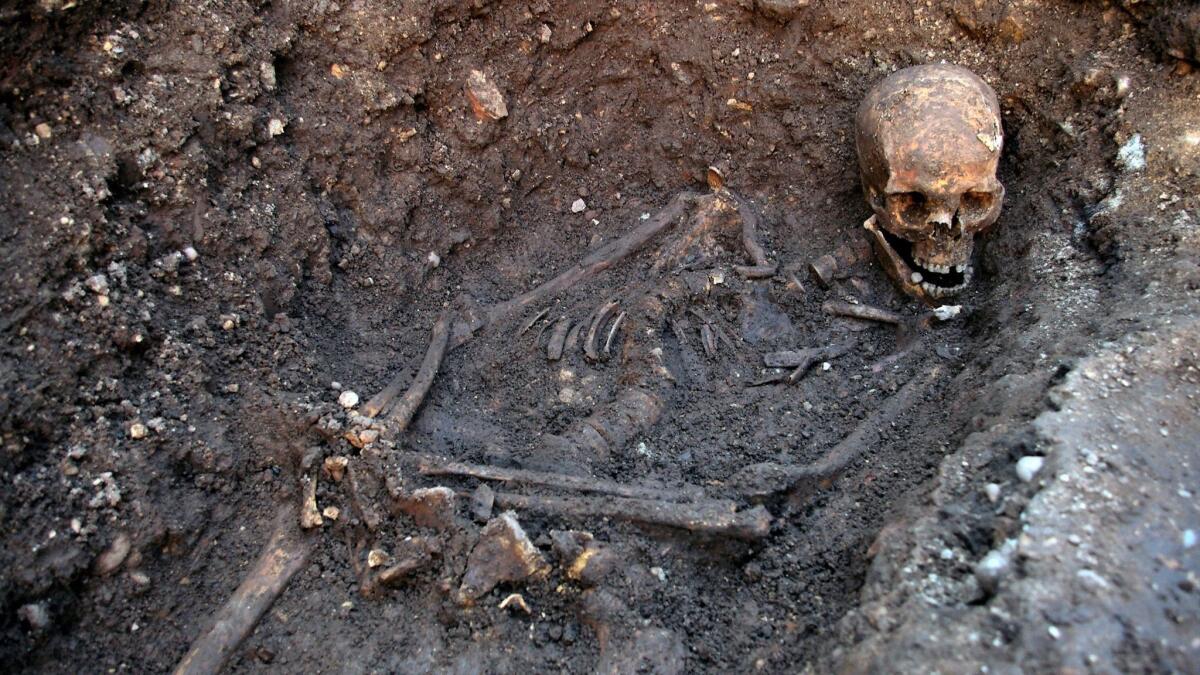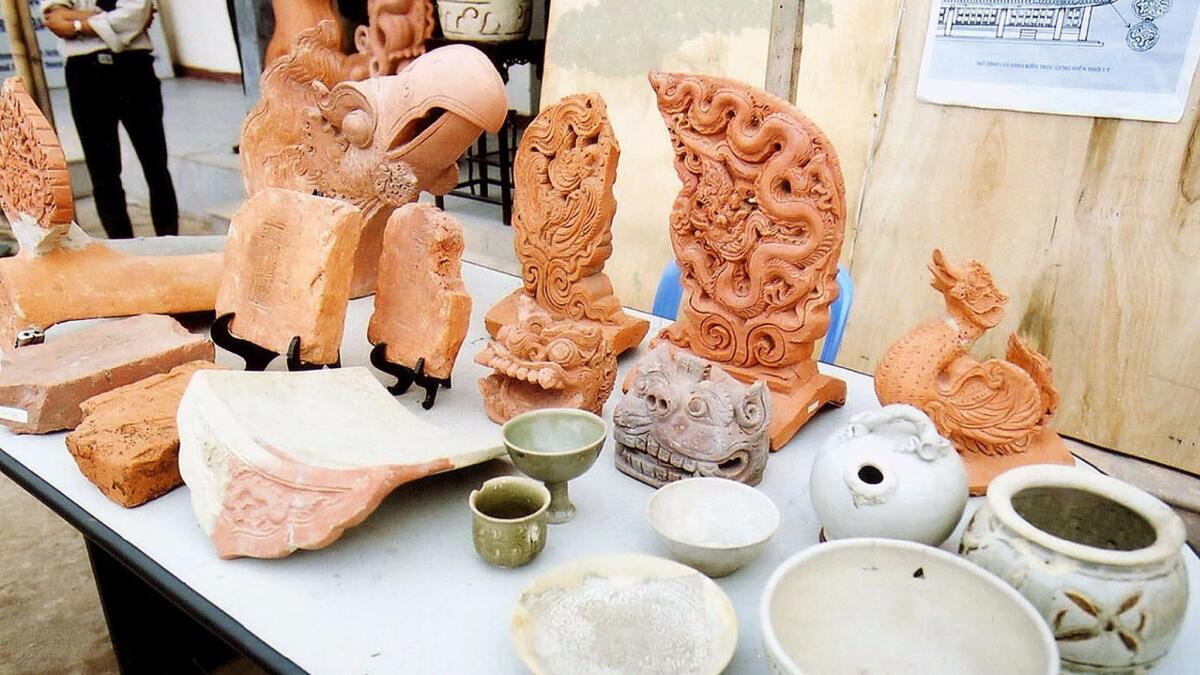An archaeologist looks at our lives in cities, over millenniums

Are cities really a good idea?
About 200,000 years ago, humans began to decide to settle down, abandoning our hunter-gatherer ways and experimenting with permanent settlements. Through millenniums of trial and error, these settlements grew larger and became more complex as more of our ancestors opted for the urban lifestyle. Our love of cities may have started slowly, but it’s since accelerated with no sign of slowing down; nearly two-thirds of Americans live in cities that themselves comprise less than 5% of the country’s land. And yet, as any commuter stuck on the 405 has wondered, are cities really a good idea?
This is the question driving Brenna Hassett’s “Built on Bones: 15,000 Years of Urban Life and Death.” Hassett, a bioarchaeologist based at London’s Natural History Museum, traces our complicated love affair with cities through the archaeological record, retelling the history of urbanization via our bones. Through subtle telltale marks in ancient bones recovered from around the world, Hassett tells us, we can uncover surprising facts about why we chose cities, and whether or not this choice has benefited us.
So what were the advantages? Mostly, a sedentary lifestyle allowed easier and more predictable access to calories via the agrarian revolution; an increase in nutrition, in turn, led to an increase in fertility among women and a reduced amount of time between pregnancy (the body can take longer to return to fertility if it lacks significant fat stores). Add to this a greater sense of safety, via permanent structures and communal defenses, and it’s easy to see why cities offered strong evolutionary advantages.
But urbanization brought with it an endless series of trade-offs. Domestication of animals allowed for easier access to food of course, but close proximity to animals also exposed us to new diseases, increasing our risk of mortality. Most importantly, cities allowed for the accumulation of wealth. A hunter sitting on a heap of dead gazelles only had a few days to make use of such largesse before it started to rot; a chieftain with a storehouse of grain, however, could leverage it economically and politically. Almost as soon as there was enough food to go around, we started starving our neighbors. And so, Hassett explains, the most important innovation resulting from urbanization was inequality, which in turn bred malnutrition, deprivation, violence and war.
But for all the shortcomings, increased poverty and malnutrition, we kept flourishing in cities. Despite its messiness, the city remains a laboratory for improving the quality of life: Squalor and overpopulation may trigger things like epidemics, but such public health problems also demand action. “So many eyes on so many problems will, however grudgingly, slowly force action.” Cities work because they force us to work together.

The paleo diet: Just say no
As a bioarchaeologist, Hassett takes particular umbrage with popular culture’s simplified and nostalgic visions of the past. Our vision of the past is not only often wrong, it is partly “a myth that tells more about where we think we’re going wrong with our own lives than anything that happened thousands and thousands of years ago.”
Among the myths she most pointedly singles out for scorn is the so-called “Paleo- diet”: the idea that our diets were healthier when we were hunter-gatherers, and that agrarian cultivation is to blame for our sedentary lifestyle and obesity issues. The notion that human misery comes from switching from meats to grains is, as Hassett points out, “patently ridiculous,” one whose logic suffers from a basic chicken-and-egg problem: how would we know to deliberately cultivate grains, she asks, if we hadn’t already been eating them? Nutritional deficiencies come not from eating grains, but from our uneven access to them; if adherents of the Paleo diet are truly interested in benefiting from pre-agrarian wisdom, Hassett suggests, they should focus primarily on ending inequality, and not just ending belly fat.
Again and again Hassett goes to the bones of the title, plundering them for surprising minutiae that reveal volumes. Urbanization changed the structure and development of our bones, and much of human history can be found in the osteological record. We got shorter and our jaws shrunk, leaving less room for wisdom teeth. New diseases caused deformation (syphilis, which began to scourge Europe 500 years ago, pockmarks the skull in its advanced stages), and changing work patterns can be tracked by tracing how muscle attaches to our bones in different periods.
But it also becomes clear how much bones can’t tell us: Many diseases kill us so swiftly that they have no impact on the bone structure, which makes them difficult to track. Historically, most humans die either as infants or in old age, which means that barring epidemic and war it can be difficult to assemble enough adult bones to learn much about them. “History is a liar,” Hassett argues, “and bioarcheology a more devoted servant of the truth,” but the overall effect of “Built on Bones” is to remind us how the sciences and humanities are interdependent on each other. Bioarchaeology may dispel some beliefs about our past while confirming others, but the field would be all but lost without the historical record as a starting place. Scientists like Hassett cannot begin to tell stories about our bones and what they mean without first acknowledging the debt they owe historians.
Filled with surprising facts and insights, “Built on Bones” is also burdened by Hassett’s constant pop culture riffing, puns and silly jokes. It’s not clear why this is needed; it feels like overcompensation when Hassett clearly already has the research goods. And often they seem to be there just for the sake of being there: All the chapters are named after songs, and the one on early urban diets is titled “Feed Me, Seymour,” but the contents have nothing to do with “Little Shop of Horrors” or cannibal plants, and it’s not at all clear why knowledge of an old Broadway show should be buy-in for a book on history. Monty Python is tirelessly referenced, as though Hassett, a tenured professor, is trying to look cool to 18 year-old students.
But just as a bioarchaeologist must sift meticulously through layers of dirt and detritus in search of bones, the reader who sifts through this unnecessary dross will be rewarded with all manner of surprising discoveries.
Dickey is the author of “Ghostland: An American History in Haunted Places,” as well as two other books of nonfiction. He teaches creative writing at National University.

“Built on Bones: 15,000 Years of Urban Life and Death”
Brenna Hassett
Bloomsbury Sigma: 320 pp., $27
Sign up for our Book Club newsletter
Get the latest news, events and more from the Los Angeles Times Book Club, and help us get L.A. reading and talking.
You may occasionally receive promotional content from the Los Angeles Times.



